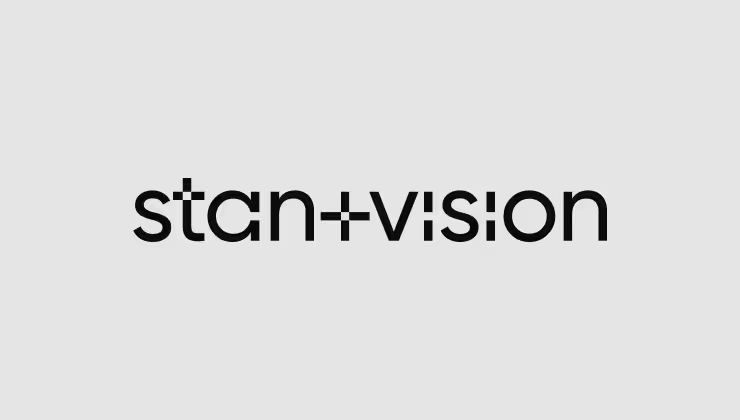Over the years, more and more end-users have expressed their ever-growing need for cloud-based software as a service applications. As a result, SaaS product design and development has become an integral component for driving digital transformation on a global scale. With the popularity of the SaaS delivery model on the rise, it's important for business owners to learn how to successfully build and launch a product that brings long-lasting value to their paying customers.
There are a few things to keep in mind when starting a software company with a specific product idea in mind. The main one, however, is building a detailed and well-planned SaaS roadmap that would improve the overall process, avoiding any possible hurdles. In this article, we're going to cover some of the key steps to building unique and user-friendly SaaS products that drive more revenue to your business.
A Step-by-step Guide to Building your Software from Scratch
At first glance, creating a SaaS model might appear as an easy task. However, in today's market, coming up with a good idea is simply not enough. As a digital product agency with an extensive experience in the industry, we know exactly how to take your SaaS ideas to the next level. Here's how to set yourself up for success:
1. Define and validate your product
First and foremost, you need to make sure that you have a clear product strategy. It's important to properly identify the problem you're seeking to provide a solution for. Some of the key questions you need to ask yourself are the following:
What is the purpose of your product? Who are the users you're planning to target? How is your SaaS solution going to benefit them?
It shouldn't come as a surprise that you should always build your ideas around your target audience's needs and expectations. Conducting thorough user research is a crucial component of your SaaS product development process. You have to dig deep when studying what your future end-users would find appealing and how your product would benefit them in the long run, thus allowing you to properly manage your customer retention.
Though this might seem like a minor or insignificant step, it's rather essential to validate your idea to ensure your target market is willing to invest in your product.

2. Research your competition
Once you have identified your target market, it's time for you to closely observe and study your competition. Don't be threatened by your competitors or how big in the industry they might be. There's a market for everything and everyone, even the smallest SaaS startups and businesses.
Instead of dwelling on your competitors' success, focus on what you can learn from them and create your own unique selling points (USPs). How is your digital product going to stand out and how are you going to scale it in the face of your competition? There are plenty of affluent SaaS businesses out there - learn from them and get inspired to find better and more efficient solutions which would allow you to thrive under the foreseeable market conditions.
3. Acquire users before pricing your product
A lot of fellow business owners and creators would encourage you to start thinking about putting a price on your product at an earlier stage. However, we're here to advise you otherwise. We believe that you shouldn't devote your efforts to monetising your product before testing it and having established a stable customer adoption system. You can't focus on financial objectives while you're still prototyping your digital product as it's most likely riddled with software bugs and glitches.
Before identifying your pricing model, concentrate on your SaaS application development and design, test it and gather enough proof your target audience finds it useful. Only once you've ensured its viability and it's ready for mass adoption, you can begin thinking about implementing a suitable pricing model.
4. Plan your design system
One of the key elements of building your software from scratch is having a thought-out and well-organised design system from the start. As a SaaS developer, you have to take your user interface into account at an earlier stage so you can concentrate on delivering an impeccable user experience. Prioritise designing the main components of your product in order to achieve consistency and avoid any possible mistakes.
The most important thing about your SaaS UI/UX design is the overall usability of your product. As we already mentioned above, you need to properly prototype and test your software so you can ensure the smooth delivery of the best possible design solutions for your end-users. Plan ahead to evade any potential design hurdles that may block you from advancing forward in your development process. It will also help to have a thorough understanding of the UX and product design roles in creating exceptional software experience.

5. Build your MVP
Defining the core functionality of your digital product should be a primary goal for any SaaS product design project. To build your MVP (minimum viable product), you're required to figure out the fundamental features which would bring value to your customers. Make sure your SaaS model is functioning as intended so you can get it to real users as soon as possible, test it, and gather the necessary feedback.
If you have followed the above-mentioned steps correctly, rest assured you would be able to build a focused and unique MVP. As soon as you have a good understanding of your user persona and the solutions you could propose, you can move on to your next product objectives.
6. Conduct real user testing
You can't release your product for mass adoption before it's been tested by real users. After you build your MVP, it's essential to create a user flow plan so you can monitor all the steps your customers are taking to swiftly navigate through your software. People are quite often unpredictable, so you can't always guarantee that the path they take from their entry point to their final interaction would be the one you anticipated.
The overall user behaviour can vary but that's exactly what will help you get your product to the next level. Conducting real user testing will allow you to understand your target audience better and improve your SaaS development services to fit their needs and expectations accordingly.

7. Gather user feedback
It's very common to encounter variables in what each one of your target users would look for in your product. Any SaaS business owner needs to be able to make adjustments and adapt to contrasting user behaviours. Track how various customers are using your software and measure the results and its success.
Don't be discouraged, but rather embrace the feedback you've gathered and move on to planning how you can improve your strategy and get better real client results.
8. Plan re-evaluation
Build-measure-learn (BML) - adopting this mindset will significantly push your business forward and help you stand out amongst your competitors. Build from your consumer feedback, measure all the necessary metrics, and learn from their critiques and observations. This will allow you to re-evaluate your strategy and process and respond better to your customers' requirements.
Once you've optimised your product and built a more consistent customer adoption, you can start thinking about fundraising and getting in touch with investors who can help you push for growth and recognition.
9. Outline KPIs and Metrics
The final step you need to consider before going to market is setting up several KPIs (key performance indicators) and metrics to aid you in measuring the ongoing success of your product. Stay focused on your end goal, yet remain open to making minor adjustments to your SaaS roadmap if needed.
Having a clear data visualisation outline is crucial for staying on board with your performance metrics and maintaining the smooth delivery of your intended features.
10. Launch your product
Now that you've completed all the necessary work to ensure your SaaS product is functioning to the best of its ability, it's finally time to launch it. However, that doesn't mean you should stop paying attention to how you can keep improving it and increasing its value.
The work doesn't stop after you've brought it to market. In fact, it's imperative to continue measuring your product's success and make thorough reports even post-launch. This way, you can update your tactics and upgrade your development progress altogether.






